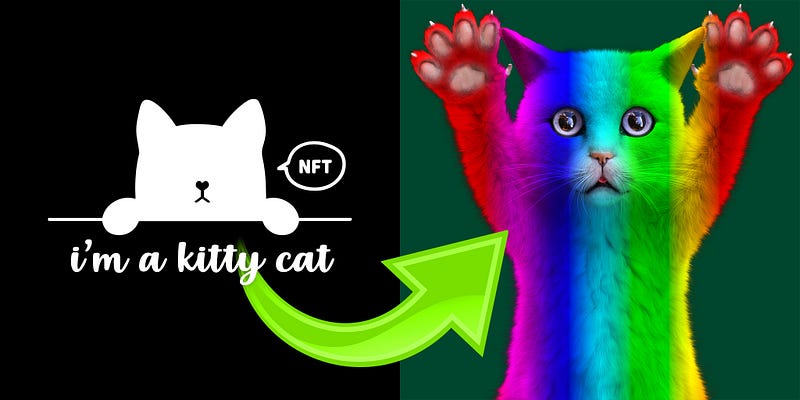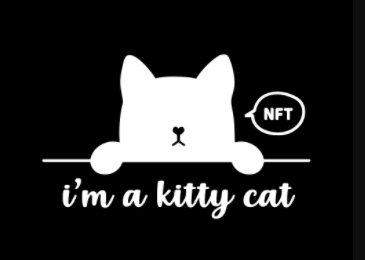Mastering NFT Reveals: Strategies for Success and Profitability
Written on
Introduction to NFT Reveals
This guide serves as a foundational overview of NFT reveals, a critical aspect of generative NFT projects that can significantly influence their success.

For instance, consider the NFT collection titled "I'm a Kitty Cat," which is currently minting and remains available. Many NFT teams approach me for assistance with generative NFT programming and web3 development, often overlooking the reveal process. While it's completely understandable, having a robust reveal strategy is essential for the project's success and profitability. This article explores what a reveal entails, the options available, and the various factors to consider. (I’ll include this piece in my main resource collection for NFT teams: “Generative NFT Programming Articles — Preparing for Your Own NFT Drops.”)
Understanding NFT Reveals
In generative NFT collections, the sales process generally operates as follows: buyers visit a minting page to mint NFTs from a specific set. For instance, when purchasing "I'm a Kitty Cat" NFTs, buyers do not initially see their actual NFTs. Instead, they are shown a placeholder image, or pre-reveal image, which means that all buyers, regardless of the quantity purchased, will see the same image in their wallets.

Once the sale concludes, the NFT team will reveal the NFTs after a predetermined period—this could range from 24 hours to several weeks—by changing the base URI in the smart contract that directs to the metadata for the collection. Following this switch, buyers can see their actual NFTs in their wallets.
For example, after my Kitty Cat was revealed, I discovered that I owned a cat that resembled a black cat I once had:

The Purpose of Reveals
The original intent behind NFT reveals was likely to maintain an element of surprise about the minted items. With rarity playing a crucial role in the value hierarchy of a collection, if buyers could see all minted items, interest in purchasing would diminish, particularly for rare NFTs. Concealing this information keeps the excitement alive as buyers anticipate their potential treasures.
As the market evolved, NFT teams recognized a trend: the period between selling out all NFTs (typically 10,000 in a generative set) and the reveal event became highly volatile and lucrative. If a set sold out, it indicated strong demand, often leading to an increase in the value of NFTs, driven by psychological factors like FOMO and speculation.
With the rise of secondary trading markets, NFT teams began to optimize this pre-reveal period to maximize profitability, as they receive a percentage of secondary sales. Therefore, a popular set can generate significant revenue from the trading frenzy that occurs before the reveal.
Considering Reveal Options
When planning an NFT reveal, teams must consider whether they expect to sell out. If they are confident in selling out, a single pre-reveal image or animation should suffice, along with a scheduled reveal time. Clear communication with the community about this timeline fosters trust and confidence.
However, if teams are uncertain about achieving sell-out status, they should still have a pre-reveal image ready. Even if the initial sales are modest, a reveal remains a valued tradition in the NFT community.
How to Create an NFT Collection - Ultimate Guide
This video provides a comprehensive step-by-step guide on how to create your own NFT collection, covering everything from concept to execution.
Generate 10,000 NFTs: Generative Art Tips and Tricks
In this video, learn expert tips and tricks for generating a large number of NFTs effectively, ensuring uniqueness and appeal.
The Reveal API: A Solution for Non-Sold-Out Sets
Many NFT projects face the challenge of providing metadata for NFTs that have not yet sold out. Typically, the metadata URI is structured in a way that allows anyone to access information about all NFTs in the set, which can be problematic. To counter this, utilizing a private API to manage metadata requests can help protect against unauthorized access while still serving legitimate requests.
The Temporary Issues with Non-Decentralization
Using a private API can be contrary to the decentralized ethos of the NFT space, but it’s a practical solution for protecting unrevealed NFTs. Once the entire collection is minted, transitioning the metadata back to a decentralized platform like IPFS is advisable.
Metadata Caching Challenges
On platforms like OpenSea, users may encounter issues with metadata updates during reveals. If the pre-reveal image persists after the reveal, it’s often due to caching. Users can manually refresh the metadata, but ideally, marketplaces would implement features to allow collection owners to refresh all NFTs at once.
Choosing the Right Pre-Reveal Image
When selecting a pre-reveal image, it should be distinctly different from the actual NFTs to avoid confusion. Creative options could include shadowy figures or animated content to create anticipation. The metadata properties can also be playful, enhancing the reveal experience.
Conclusion
Crafting an engaging reveal process not only enhances the buyer's experience but also contributes to the overall success of the NFT project. By employing creative strategies and effective communication, NFT teams can maximize excitement and profitability during the reveal phase.

Jim Dee is a prolific writer, developer, and multimedia creator based in Portland. Discover more about him and his ventures at JPD3.com. Thank you for reading! Cat image credit: Midjourney AI.